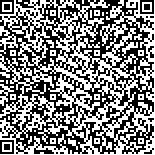| 摘要: |
| [摘要] 目的 比较超声乳化晶体摘除联合房角分离术与复合式小梁切除术治疗原发性闭角型青光眼合并白内障的疗效。方法 选取2014-07~2018-08在该院确诊为原发性闭角型青光眼合并白内障患者88例(88眼),随机分为观察组和对照组,各44例(44眼),观察组采用白内障超声乳化晶体摘除联合房角分离术治疗,对照组采用复合式小梁切除术治疗。比较两组术前、术后(1 d、7 d、1个月)的视力、眼压、前房深度及并发症发生情况。 结果 两组术后1 d、7 d、1个月眼压均较术前明显下降(P<0.05),且随着时间推移能保持在正常范围内;观察组术后7 d、1个月均低于对照组,差异有统计学意义(P<0.05)。观察组术后1 d、7 d、1个月视力均较术前明显改善(P<0.05)。对照组术后1 d视力较术前无明显变化,但术后7 d、1个月视力较术前明显改善。观察组术后1 d、7 d视力优于对照组,差异有统计学意义(P<0.05),但术后1个月两组视力差异无统计学意义(P>0.05)。观察组术后1个月前房深度较术前明显提高,差异有统计学意义(P<0.05)。对照组术后1个月前房深度与术前比较差异无统计学意义(P>0.05)。观察组并发症发生率(15.91%)低于对照组(34.09%),P<0.05。结论 原发性闭角型青光眼合并白内障患者行超声乳化晶体摘除联合房角分离术及复合式小梁切除术均可达到明显降眼压、提高视力的目的,但是超声乳化晶体摘除联合房角分离术后前房深度明显加深且安全性高,并发症少,值得在临床上推广。 |
| 关键词: 原发性闭角型青光眼 白内障 超声乳化晶体摘除 房角分离术 复合式小梁切除术 治疗效果 |
| DOI:10.3969/j.issn.1674-3806.2019.05.15 |
| 分类号:R 775.2 |
| 基金项目: |
|
| Curative comparative of two different surgical methods on primary angle-closure glaucoma with cataract |
|
ZHONG Shan, ZENG Si-ming
|
|
Department of Ophthalmology, the People′s Hospital of Guangxi Zhuang Autonomous Region, Nanning 530021, China
|
| Abstract: |
| [Abstract] Objective To compare the efficacy of phacoemulsification crystal extraction combined with goniosynechialysis and compound trabeculectomy on treating patients with primary angle-closure glaucoma complicated with cataract. Methods Eighty-eight patients(88 eyes) of primary angle-closure glaucoma complicated with cataract diagnosed in our hospital from July 2014 to August 2018. They were randomly divided into two groups, with 44 patients(44 eyes) in the observation group and the rest(44 patients, 44 eyes) in the control group. The observation group was treated with phacoemulsification crystal extraction combined with goniosynechialysis, and the control group was treated with compound trabeculectomy. Visual acuity, intraocular pressure, anterior chamber depth and complications were compared between the two groups before and after surgery(1 day, 7 days and 1 month). Results The intraocular pressure of the two groups at 1 day, 7 days and 1 month after surgery was significantly lower than that before surgery(P<0.05), and could be maintained within the normal range with time going on. The intraocular pressure of the observation group was lower than that of the control group 7 days and 1 month after surgery, and the difference was statistically significant(P<0.05). The visual acuity of the patients in the observation group was significantly improved 1 day, 7 days and 1 month after surgery compared with that before surgery(P<0.05). The visual acuity of the patients in the control group did not change significantly 1 day after surgery, but improved significantly 7 days and 1 month after surgery. At the same time point of 1 day and 7 days after surgery, the difference in visual acuity between the observation group and the control group was statistically significant(P<0.05), but there was no statistically significant difference 1 month after surgery(P>0.05). One month after surgery, the anterior chamber depth in the observation group was significantly higher than that before surgery, and the difference was statistically significant(P<0.05). There was no significant difference between preoperative and anterior chamber depth one month after operation in the control group(P>0.05). The incidence of complications in the observation group(15.91%) was lower than that in the control group(34.09%) (P<0.05). Conclusion The patients with primary angle-closure glaucoma and cataract receiving phacoemulsification crystal extraction combined with goniosynechialysis and compound trabeculectomy can achieve the goal of significantly reducing intraocular pressure and improving eyesight, but the phacoemulsification crystal extraction combined with goniosynechialysis postoperative anterior chamber depth deepening has higher safety and less complications, and is worth popularizing in clinic. |
| Key words: Primary angle-closure glaucoma Cataract Phacoemulsification crystal extraction Goniosynechialysis Compound trabeculectomy Treatment effect |

